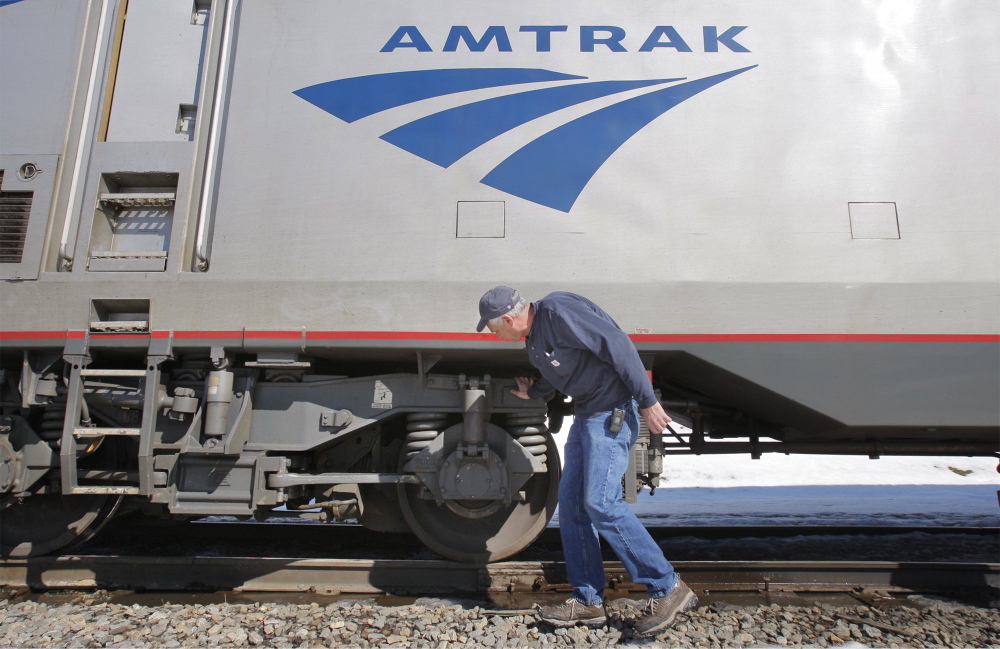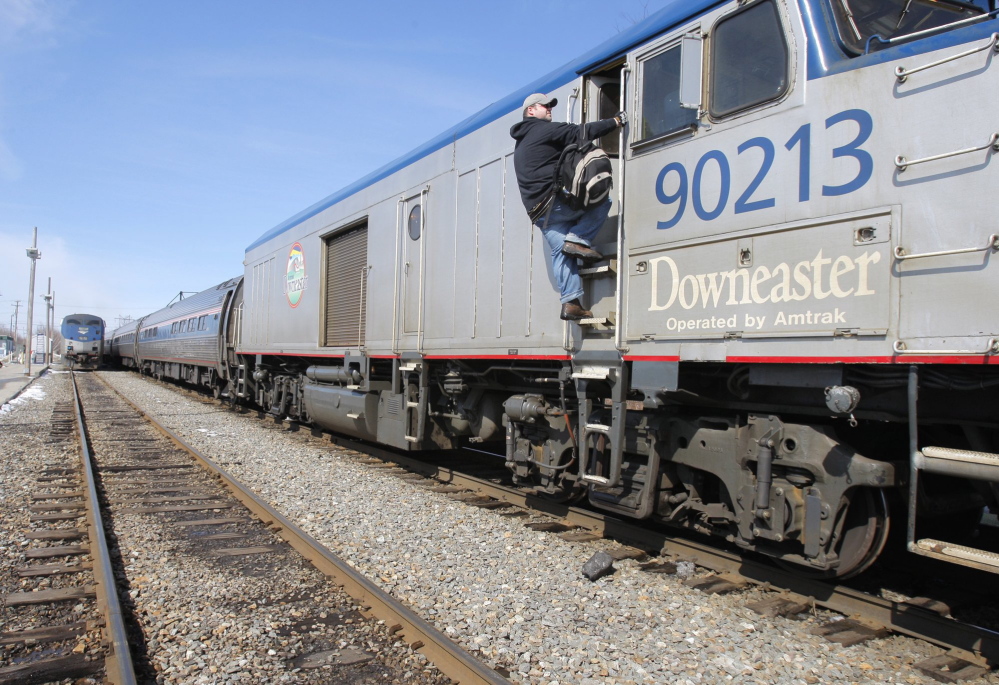Amtrak Downeaster passenger service has been delayed or canceled this week because damage along the track has forced trains to slow down dramatically in some places, said the Northern New England Passenger Rail Authority’s top official.
Rail inspectors determined that harsh winter weather and heavy snow melt had destabilized the ground under about 27 noncontiguous miles of track between Freeport and Boston, said the authority’s executive director, Patricia Quinn, who expects it could take weeks to repair the damage.
Winter-related track damage isn’t unusual, she said, but the delays it is causing this year are particularly severe because the damage occurred in places where the trains normally run fastest.
“Obviously, this is not something we’re happy about,” Quinn said.
The rail authority’s website said two runs have been canceled for the rest of this week – the 686 train that leaves Portland at 2:35 p.m. weekdays and arrives in Boston at 5:05 p.m., and the 683 train that leaves Boston’s North Station at 11:35 a.m. weekdays and arrives in Portland at 2:05 p.m. Quinn said the cancellations would prevent overlapping “delay cascades” and give work crews more time to repair the damaged areas.
All other runs are expected to take an average of 35 to 45 minutes longer than normal because rail officials have issued “slow orders” for the damaged areas. The orders require the trains, which normally run as fast as 80 mph, to slow down to as little as 10 mph.
Delays likely will continue for another week or two but become shorter each day as damaged areas are repaired, Quinn said.
She said she is not certain whether the cancellations will continue into next week. “It’s my hope that we won’t be in a position to have to cancel trains next week,” she said.
Brian Beeler, manager of passenger services for the rail authority, said he has received dozens of telephone calls and emails from passengers who have been affected by the delays.
“We’ve certainly seen some very irate customers, and then there are those who are taking it in stride and saying they understand why this is happening,” he said.
Beeler said repairs are being handled by the track’s owner, Pan Am Railways, which is responsible for maintaining the 138 miles of rail between Brunswick and Boston. The line runs for 116 miles between Portland and Boston.
Amtrak owns and operates the Downeaster trains, and the Northern New England Passenger Rail Authority manages the transportation system.
Beeler estimated that 65 people use the Downeaster to commute to their jobs in Boston from Portland and from Maine train stations south of Portland. In New Hampshire, 150 to 180 people use the train to reach their jobs in Boston.
Wayne Davis, chairman of the passenger-rail advocacy group TrainRiders/Northeast and a volunteer at the Downeaster’s Brunswick station, said commute times for the trains running between Brunswick and Boston have been extended by as much as 53 minutes since the weather damage was revealed by a geometry car, an automated track-inspection vehicle.
“Nobody wants to ride the train if they’re going to be 53 minutes late,” Davis said. “You’re going to be late for work, and you’re going to be late getting home.”
Bill Lord of Kennebunkport, who used to ride the Downeaster to his teaching job in Boston, doesn’t ride the train regularly any longer, but he serves on the board of directors for TrainRiders/Northeast.
He said it’s good that repairs are being done now, before the tourist season.
“Too many times, we get caught up in getting to work on time. No one wants to be delayed, but people need to realize that this is a safety issue,” Lord said. “It is not going to be a quick fix. The reality is, these things take time.”
The Downeaster’s on-time performance in March was 81.3 percent, and its 12-month average was 74.9 percent, according to Amtrak’s website. About 1,400 passengers ride the Downeaster on a typical day, Quinn said.
The Downeaster’s ridership has grown steadily since it started running between Portland and Boston in 2001. Service was extended to Freeport and Brunswick in 2012.
In the service’s most recent fiscal year, which ended June 30, ridership increased about 5 percent over the previous year, with a total of about 550,000 riders.
Staff Writer Dennis Hoey contributed to this report.
J. Craig Anderson can be contacted at 791-6390 or at:
Twitter: jcraiganderson
Send questions/comments to the editors.





Success. Please wait for the page to reload. If the page does not reload within 5 seconds, please refresh the page.
Enter your email and password to access comments.
Hi, to comment on stories you must . This profile is in addition to your subscription and website login.
Already have a commenting profile? .
Invalid username/password.
Please check your email to confirm and complete your registration.
Only subscribers are eligible to post comments. Please subscribe or login first for digital access. Here’s why.
Use the form below to reset your password. When you've submitted your account email, we will send an email with a reset code.